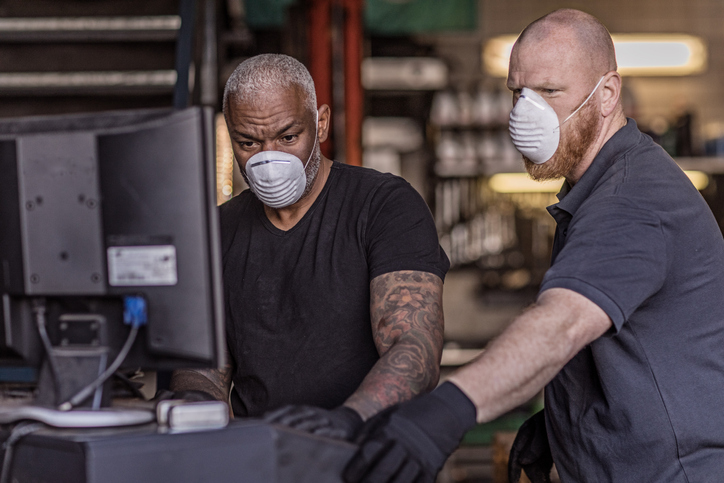
An online event hosted by the Urban Manufacturing Alliance offers a few examples.
It should be no surprise that the future of the United States’ manufacturing sector relies on finding a new generation of workers to replace a rapidly aging one.
On Monday, the Urban Manufacturing Alliance and The Century Foundation’s Industry & Inclusion National Cohort program explored the way government and community institutions around the country are trying to do just that. And in so doing, they detailed specific examples of partnerships that workforce training organizations have forged with unlikely allies to reinvigorate local labor pools.
According to the event Monday, there are estimates that an additional 2.4 million manufacturing workers are needed in the next decade. These new workers will have to be skilled at managing the technologies that are radically changing how we manufacture, while the manufacturing sector – if it wants to remain among the most dynamic and productive in the world – will need to incorporate diversity, equity, and inclusion into the development of its workforce. Lasting sectoral partnerships between communities and companies will be the most effective strategy to achieve both of these goals. But that said, establishing racial equity intentional partnerships is easier said than done.
Some of the speakers explained how they are working to do this, and not by simply focusing on the state the de-industrialization in their communities. History is important, but the potential that emerging opportunities could offer in creating more equitable careers is the real selling point here.
Take Catrina Crane, for example, a director at Menomonee Valley Partners (MVP) in Milwaukee, Wisconsin. MVP’s mission is to revitalize and sustain the Menomonee River Valley as a thriving urban district that advances economic, ecological, and social equity for the benefit of the greater Milwaukee community.
Once southeastern Wisconsin’s most visible eyesore, the Menomonee Valley has been transformed, becoming a national model in economic development and environmental sustainability, while keeping in mind the pain of institutional racism. The long history of the valley reflects this pain: From the forceful removal of the Potawatomi, Ojibwe, Odawa, Sauk, Fox, and other tribes who had called the lands surrounding the valley home since the 1600s, to the 200 nights of marches in 1967-68 that crossed the valley — the divide between Milwaukee’s black and white communities — in protest of the city’s racial discrimination and housing segregation, to the unrest in the city today.
MVP partners with public and private entities to develop the valley as an attractive business location, center of job creation, and community destination and ensure that economic, ecological, and social equity advances in the Milwaukee community. Learn more about them here.
Another speaker, Stephen Tucker, president and CEO of Northland Workforce Training Center (Northland) in Buffalo, New York, explained how his organization’s is the signature workforce program under the Buffalo Billion initiative based in an eastside neighborhood with a 91% minority population.
Northland is an industry-driven, public-private partnership between employers, educational institutions, community and faith-based organizations, and state and local government, and it focuses on upskilling the local labor pool and creating on-ramps to training, co-ops, internships, apprenticeships, and permanent employment for Western New Yorkers seeking high-paying advanced manufacturing and energy careers.
Northland sees the economic well-being of Western New York as inextricably tied to the development and maintenance of a skilled and diverse workforce that can meet the needs of the advanced manufacturing and energy sectors in that region, while providing opportunities to job seekers who need gainful employment, career advancement, and economic sustainability.
And it’s uniquely designed to reduce the major barriers that prohibit prospective students from enrolling and completing post-secondary education, whether it’s issues with transportation, childcare, academic readiness, or affordability. One giant step toward equity that Northland has taken is its commitment to providing for-credit education at little to no cost to all individuals with financial need, as well as supporting students throughout the accreditation process by providing intensive wraparound and supportive services. Read more about Northland here.
These are just two examples of the programs discussed during the event, but they’re good examples that should be replicated across the United States to assure we build our manufacturing workforce to be not only internationally competitive, but equitable and just.
